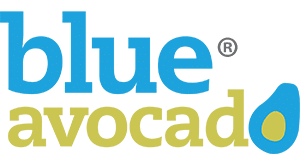Don’t Call it a Crisis Plan: How Nonprofits Can Proactively Plan for Turbulent Times
You actually have more time than you think to get your nonprofit’s messaging right in a crisis. It’s better to take a little extra time than to stick your foot in your mouth and end up in a worse place than you started.

No one wants a crisis, but with a little foresight and some planning, it doesn’t have to be the end of the world for your organization.
It’s really all about semantics. Crisis. Scary. Risk management. Sounds financial. Issues mitigation. Now you’re just using fancy words. Whatever you call it, though, you need to plan for it.
As someone who’s handled many a crisis for many a nonprofit, believe me when I say you need to plan for everything that could possibly go wrong — and even the situations you can’t think of, because those will happen too.
From protests to employee issues to a global pandemic, I’ve seen it all. Here are some tips to put together a proactive plan for your organization — for whatever it is you want to call it.
Planning for the Unplanned
Crises aren’t necessarily what happens, but how it’s communicated — whether something is communicated poorly, or simply not at all.
Having a proactive plan in place establishes a measured process to follow, including legal review to ensure timely, clear, and consistent communications to the right audiences at the right time. If you can get out ahead of a situation, you can control the narrative and contain any potential damage — and even come out ahead.
I advise my clients to create a playbook that serves as a one-stop document for reference in times of need. It’s always best to go through the exercise of what to do in a given situation when you aren’t already in said situation.
This way, everyone can think rationally and objectively, so that when a crisis does hit (and it will), your actions can be carried out much more smoothly than if you were starting from scratch.
The Playbook
Identify the crisis team.
Typically, this would include your organizational leadership and department heads, but also any frontline staff (customer service, social media, etc.) and, depending on the nature of the issue, potentially HR, legal, and/or IT.
Err on the side of “more is more” and create a contact sheet with everyone’s name, title, email, and phone number, including cell phone — this is important if the issue at hand is technical and you can’t reach your colleagues via your work-issued email or phone number (and believe me, this has happened!).
On that note, make sure everyone has a printed copy of this plan both at work and at home, so they always have these contacts available.
Consider all audiences.
If you have a strategic plan, you hopefully already have identified your audiences and the channels with which to reach them. If not, consider all audiences, internal and external (staff, board, volunteers, partners, clients, etc.), and all the tools you have at your disposal such as email, phone, e-blast, social media, text messaging, etc.
How will you communicate with each audience if the situation requires it? What infrastructure is already in place? What will you need to create in case of emergency? Clean up any lists and start on that now — you’ll thank yourself later.
Social media management.
Consider your social media protocols: Do you have go-to language for when your channels’ moderator is unavailable? Do you have a policy for removing inappropriate comments?
Social media is a very public place that can serve as a microphone for your organization, so it’s important you agree as an organization who is allowed to post and make calls concerning these channels (tip: the fewer gatekeepers the better).
This also ensures your pages won’t be “hijacked” by bad actors, or that you’ll receive any criticism for perceived bias if you need to turn off comments.
Risk assessment.
Let’s get into it! For this exercise, I like to gather my crisis team (again, likely leadership and frontline staff) and identify any and all potential or recurring issues that could befall the organization.
Once you have these listed, see how they fall into natural categories — likely those could be “employee issues,” “client, board, or partner issues,” “security issues,” “industry issues,” and more.
Go through each scenario and list if an issue is “likely,” “unlikely,” or “highly likely,” and then work through to discuss a protocol for each one.
Which scenarios require the entire crisis team? Which can be handled by a single department? When does leadership and/or board need to be flagged? Which requires an update to staff? Map it all out. Do some situations require their own sub-plan? Better to do it now.
I’ve found doing this exercise sheds light on other areas of our work that needed updating, such as clarifying our employee handbook or other processes.
Again, now is the time to work on these items when there’s not something urgent and people can ask questions in a time that’s not already heated or under scrutiny.
Start on the messaging.
If you went through an organizational planning process, you likely already have some established key messages; these can be used to tie into your standby messaging for each identified issue category. When dealing with tough issues, I like to use the following techniques:
- Flagging: Emphasizing a certain positive point.
- Bridging: When dealing with a tough issue, acknowledging the harm, and then bridging back to the solution/key message.
- Illustrating: Using an example or a story to drive your point home.
Getting your message right.
You actually have more time than you think to get your messaging right in a crisis. It’s better to take a little extra time than to stick your foot in your mouth and end up in a worse place than you started.
The worst phrase you can say is, “no comment” — inevitably, it will look like you’re hiding something — but you also don’t have to know all the answers all the time. It’s better to say “let me look into that” than to share potentially false or inaccurate information.
No one wants a crisis, but with a little foresight and some planning, it doesn’t have to be the end of the world for your organization. People know that unexpected things happen beyond anyone’s control. Organizations are human, and humans make mistakes. What’s important is how you deal with and bounce back from them. Following these tips should be a good start.
Interested in support with crisis planning, messaging and more? View the author’s website to learn more.
You might also like:
- How to Stop Managing Your Nonprofit and Start Leading
- When the Board Becomes the Problem: Reclaiming Power in Nonprofit Leadership
- Why Human-Centered AI Adoption Matters for Nonprofits
- The New Sheriff in Town: Tips for Successfully Leading a Nonprofit Team (that Someone Else Built)
- When the System Fails Quietly: What I’ve Learned from Sitting Between the Frontline and the Data
You made it to the end! Please share this article!
Let’s help other nonprofit leaders succeed! Consider sharing this article with your friends and colleagues via email or social media.
About the Author
Amanda ReCupido has worked both in-house and agency-side with nonprofit clients to lead strategic planning efforts encompassing fundraising and communications, staff and board engagement, issues mitigation and more. Her most recent role was as COO of a national mid-size PR agency where she established standards and processes that led to organizational efficiency, growth and culture building. Amanda is the current president of her local library foundation and speaks frequently to media about the importance of libraries as vital public institutions. She holds a BA from Illinois Wesleyan University, and certificates from New York University and Northwestern University. She lives in the Chicagoland area.
Articles on Blue Avocado do not provide legal representation or legal advice and should not be used as a substitute for advice or legal counsel. Blue Avocado provides space for the nonprofit sector to express new ideas. The opinions and views expressed in this article are solely those of the authors. They do not purport to reflect or imply the opinions or views of Blue Avocado, its publisher, or affiliated organizations. Blue Avocado, its publisher, and affiliated organizations are not liable for website visitors’ use of the content on Blue Avocado nor for visitors’ decisions about using the Blue Avocado website.







